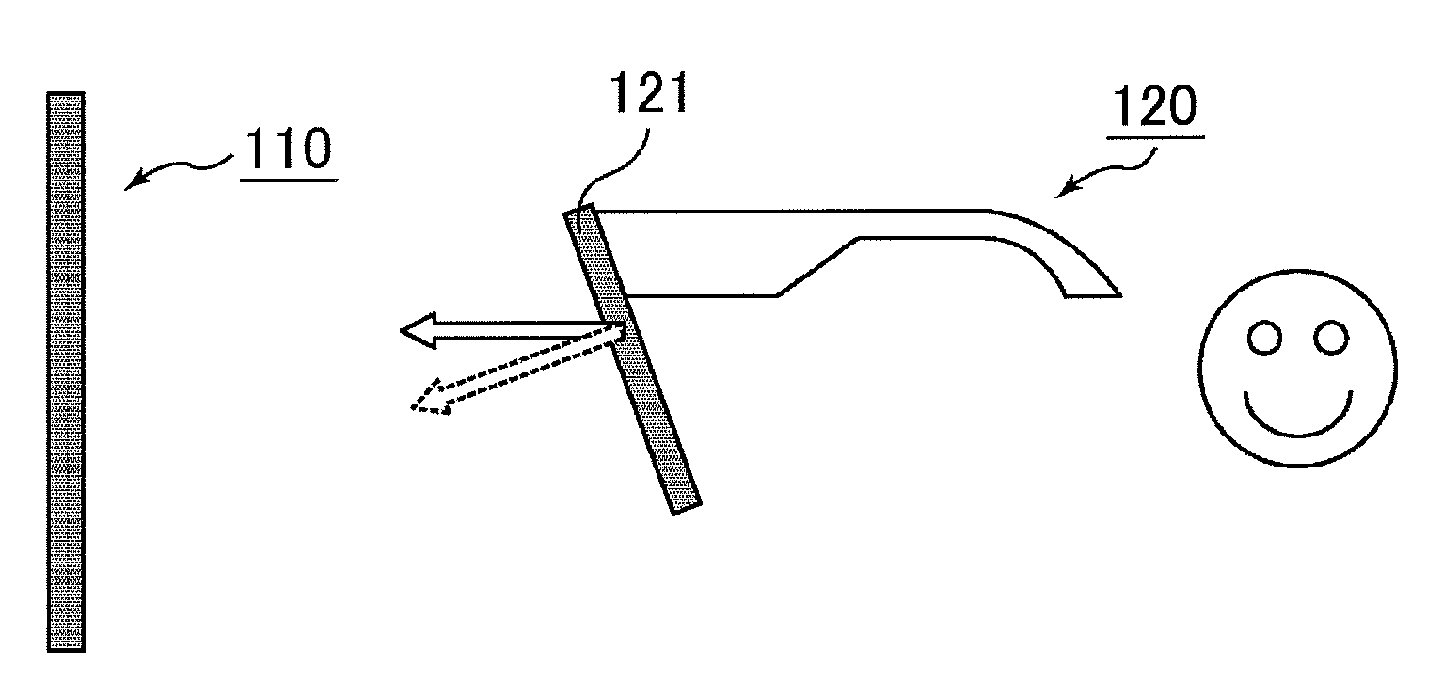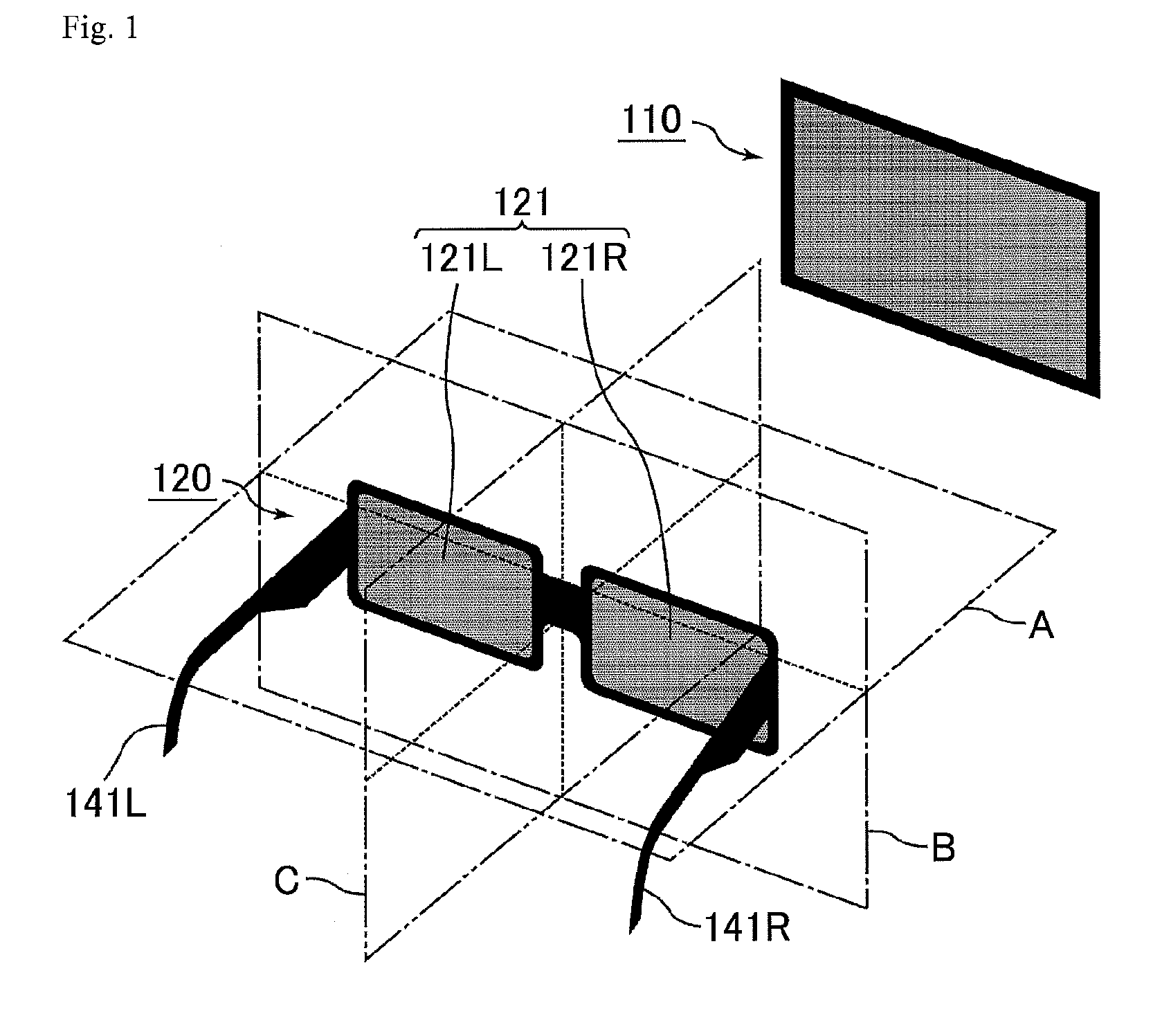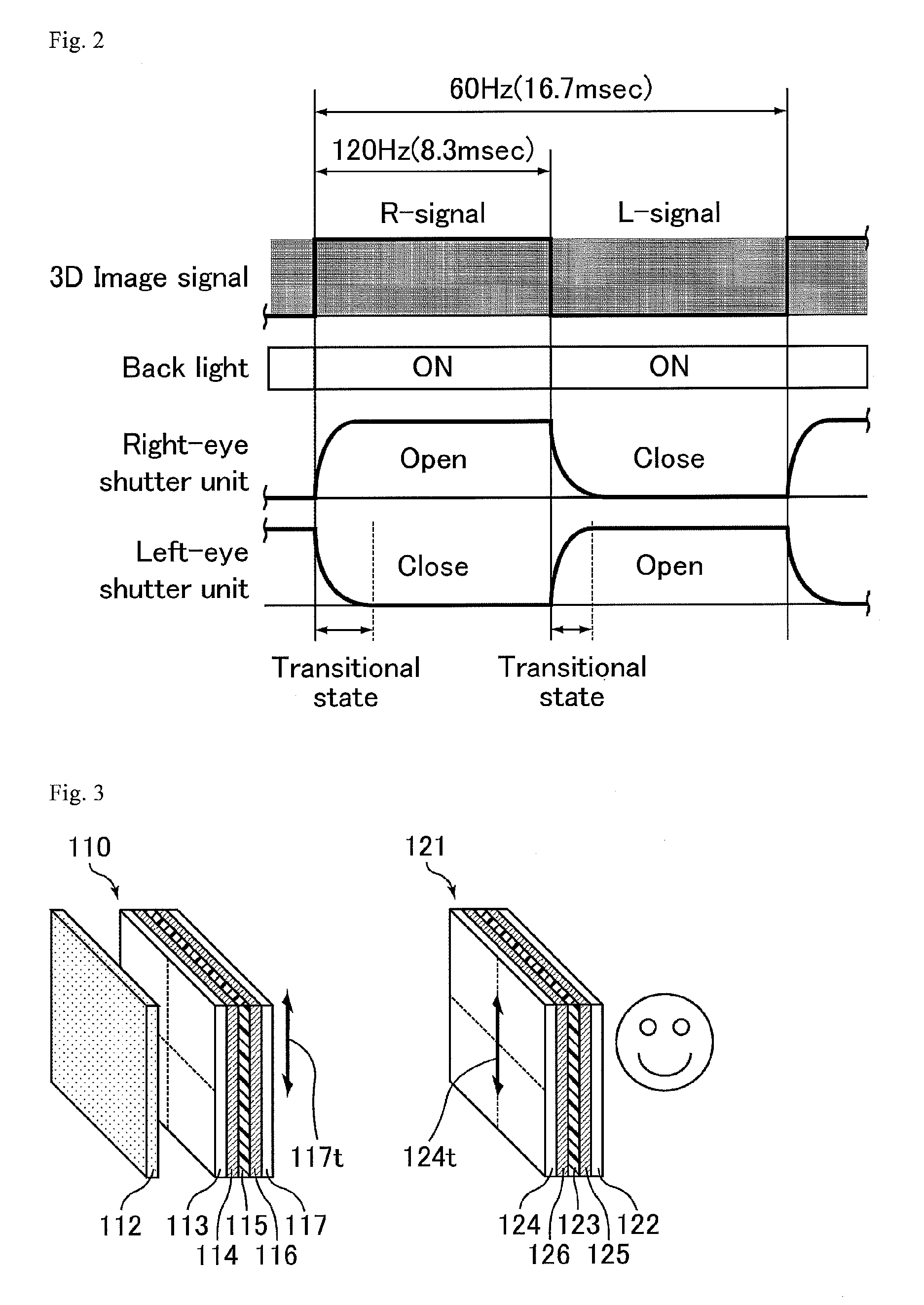Active shutter glasses and three-dimensional image recognition unit
a three-dimensional image recognition and active shutter technology, applied in the field of active shutter glasses and three-dimensional image recognition units, can solve the problems of increasing the cost of an image display device, exceptionally poor display quality, etc., and achieve excellent display quality and improve contrast ratio
- Summary
- Abstract
- Description
- Claims
- Application Information
AI Technical Summary
Benefits of technology
Problems solved by technology
Method used
Image
Examples
embodiment 1
[0142]FIG. 1 is a schematic perspective view showing a three-dimensional image recognition unit of Embodiment 1. The three-dimensional image recognition unit of Embodiment 1 uses an active type. As shown in FIG. 1, the three-dimensional image recognition unit includes a 3D display device (image display device) 110 and active shutter glasses 120. The active shutter glasses 120 have two lenses of a right-eye lens 121R and a left-eye lens 121L. The active shutter glasses 120 of Embodiment 1 have a right temple 141R which is stretched in a direction substantially orthogonal to the lens surface of the right-eye lens 121R with the side of the right-eye lens 121R as a leading end, and a left temple 141L which is stretched in a direction substantially orthogonal to the lens surface of the left-eye lens 121L with the side of the left-eye lens 121L as a leading end. The stretching direction between the right temple 141R and the left temple 141L and the angle between the lens surface of the ri...
embodiment 2
[0192]A three-dimensional image recognition unit of Embodiment 2 has the same configuration as in Embodiment 1 except that the alignment direction and the optical characteristics of the liquid crystal cell of the active shutter glasses are different. In Embodiment 2, the direction of twist of the liquid crystal molecule group in the right-eye liquid crystal cell and the direction of twist of the liquid crystal molecule group in the left-eye liquid crystal cell are different from each other. Specifically, while the direction of twist of the liquid crystal molecule group in the right-eye liquid crystal cell is the counterclockwise direction (rotation to the left) when viewed from the observer side, and the direction of twist of the liquid crystal molecule group of the left-eye liquid crystal cell is the clockwise direction (rotation to the right) when viewed from the observer side.
[0193]FIGS. 20 and 21 are exploded perspective views showing the structure of active shutter glasses of E...
embodiment 3
[0217]A three-dimensional image recognition unit of Embodiment 3 is the same as Embodiment 1, except that the active shutter glasses have a different configuration. Embodiment 3 is different from Embodiment 1 in that a λ / 4 is further provided in the linearly polarizing plate on the observer-side surface of the 3D display device to form a circularly polarizing plate.
[0218]FIG. 26 is a schematic perspective view showing the arrangement relationship of a display device and active shutter glasses of a general three-dimensional image recognition unit. In a liquid crystal display device for a recent television, a VA mode or an IPS mode is generally used. As shown in FIG. 26, it is designed such that, in a VA mode or an IPS mode, a transmission axis 817t of a linearly polarizing element 817 closer to the observer side than a liquid crystal cell in a liquid crystal display device 810 becomes a longitudinal direction. This is because, even when special treatment, such as new addition of a me...
PUM
| Property | Measurement | Unit |
|---|---|---|
| azimuth angle | aaaaa | aaaaa |
| azimuth angle | aaaaa | aaaaa |
| azimuth angle | aaaaa | aaaaa |
Abstract
Description
Claims
Application Information
 Login to View More
Login to View More - R&D
- Intellectual Property
- Life Sciences
- Materials
- Tech Scout
- Unparalleled Data Quality
- Higher Quality Content
- 60% Fewer Hallucinations
Browse by: Latest US Patents, China's latest patents, Technical Efficacy Thesaurus, Application Domain, Technology Topic, Popular Technical Reports.
© 2025 PatSnap. All rights reserved.Legal|Privacy policy|Modern Slavery Act Transparency Statement|Sitemap|About US| Contact US: help@patsnap.com



